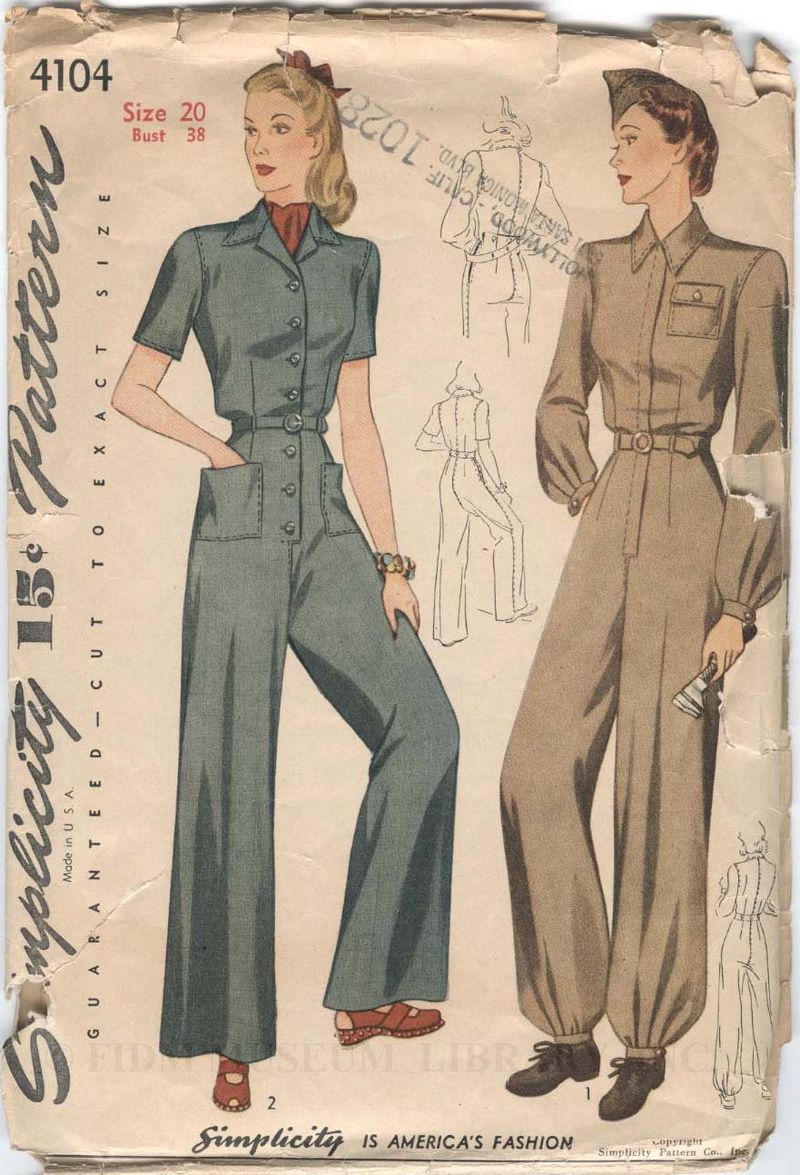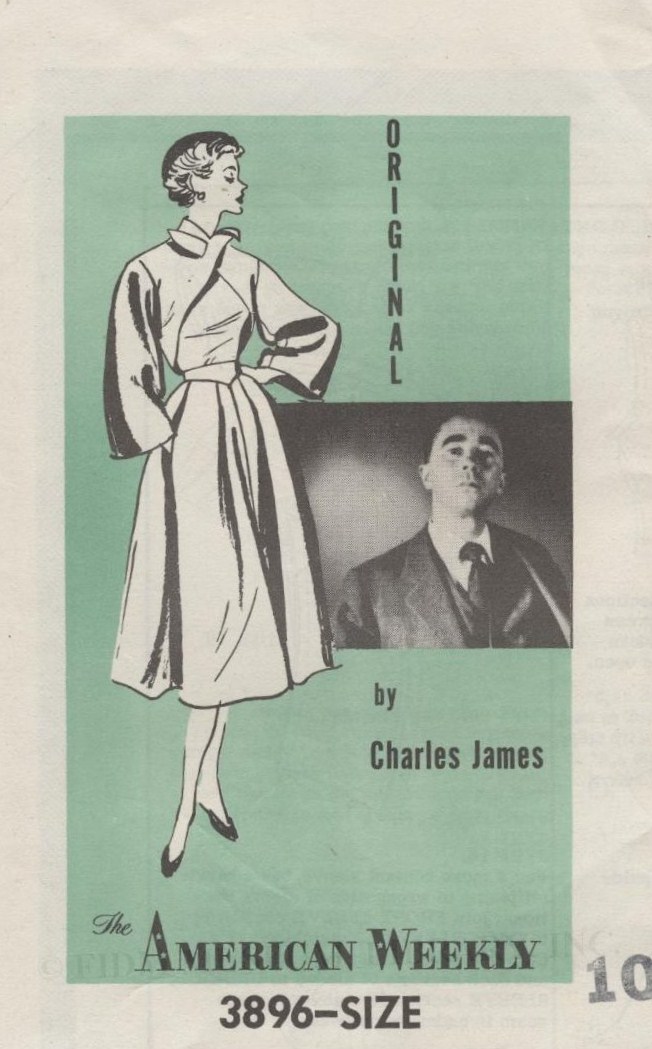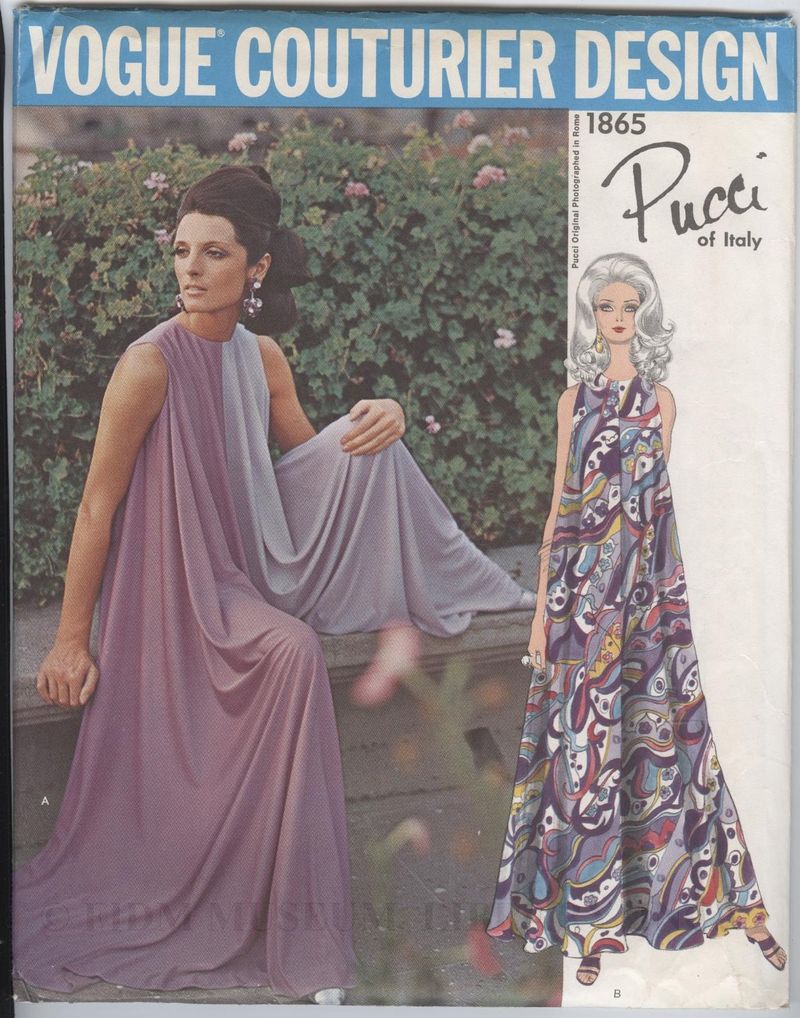Sewing patterns from the FIDM Museum
Within the FIDM Museum collection are a number of smaller mini-collections. Some, like the Rudi Gernreich Archive, consist of large groupings of objects that document the work of a specific designer. Others, like our photograph collection, are less focused groupings of objects collected to help us interpret fashion history. One of my favorite mini-collections is our collection of paper sewing patterns. In addition to their entertaining envelope illustrations, sewing patterns are a valuable source of fashion information because they help us understand how high fashion or runway garments are interpreted for the mass market. This is particularly true for patterns associated with known designers. They can also point to the social context of specific garments or styles. Because many patterns are copyrighted, they can be very useful in dating extant garments. Sewing patterns also allow us the opportunity to engage with fashion on a very personal level. With a bit of practice and patience, any sewer can create a custom-designed garment demonstrating either a highly individual sense of style or one perfectly attuned to the latest runway fashions.
 Misses' and Women's Slack Suit and Coverall pattern
Misses' and Women's Slack Suit and Coverall pattern
Simplicity
1942-45
2003.46.10
Gift of Andrea Tice In Memory of Carmelita Johnson
Evoking a military uniform, this World War II era pattern demonstrates that Rosie the Riveter was no media construct; notice the wrench held by the woman on the right. During the war, women worked outside the home in record numbers. As many worked with heavy machinery in factory settings, a practical, washable coverall was a common uniform. Other women joined quasi-military organizations, like WAVES (Women Accepted for Voluntary Emergency Service) and WAC (Women's Auxiliary Army Corp) which had their own standardized uniforms. Whether intended for work-wear or practical day-dress, this pattern clearly demonstrates the overriding themes of the World War II years: practical austerity and unity of purpose.

Skirt and bolero jacket
Charles James for The American Weekly
1953
Gift of Barbara Becker
2008.927.3
Charles James worked in the tradition of haute couture, creating custom designed and fitted garments for his well-known clientele. In 1953, The American Weekly (a Sunday supplement produced by Hearst for inclusion in their newspapers) sold at least 3 different Charles James patterns via mail-order for 50 cents: a fitted skirt, a full-skirted dress and the skirt and bolero-style jacket pictured above. Though James is considered a design genius, he was notoriously bad at managing the business aspect of his design house. Did he allow these patterns as a money-making endeavor? Each pattern also included a color insert, featuring completed versions of the outfits pictured on the pattern envelope. Though a matching blouse is pictured, a blouse pattern was not included in this pattern.
 2008.927.3 Pattern envelope insert
2008.927.3 Pattern envelope insert
For many designers, collaborating with pattern companies to produce paper patterns of their creations was a way to extend their name recognition and brand reach. Though a Charles James original was outside the realm of financial possibility for most women, almost anyone could afford to purchase a 50 cent paper pattern. For the home sewer interested in recreating the Pucci pattern pictured below, the dilemma was where to find the distinctive Pucci print fabric. You can read more about Emilio Pucci and his eponymous brand in this recent post about our 1964 Pucci maxi dress.
 Bias cut lounge pajamas
Bias cut lounge pajamas
Pucci for Vogue Patterns
1968-72
Gift of Judith A. Gilbert
2008.937.9
This 1973 pattern demonstrates how the Peacock Revolution loosened sartorial limitations for men of all ages. Essentially a pattern for a two-piece suit, the envelope illustration pictures the completed pattern elements in a variety of colors and bright plaids. The men themselves sport long hair and casual, relaxed poses. No stiff, conservative business suits for these modern gentlemen!
 Teen-Boy's and Men's Unlined Jacket and Wide Leg Pants
Teen-Boy's and Men's Unlined Jacket and Wide Leg Pants
Simplicity
1973
Gift of Barbara Becker
2008.927.7